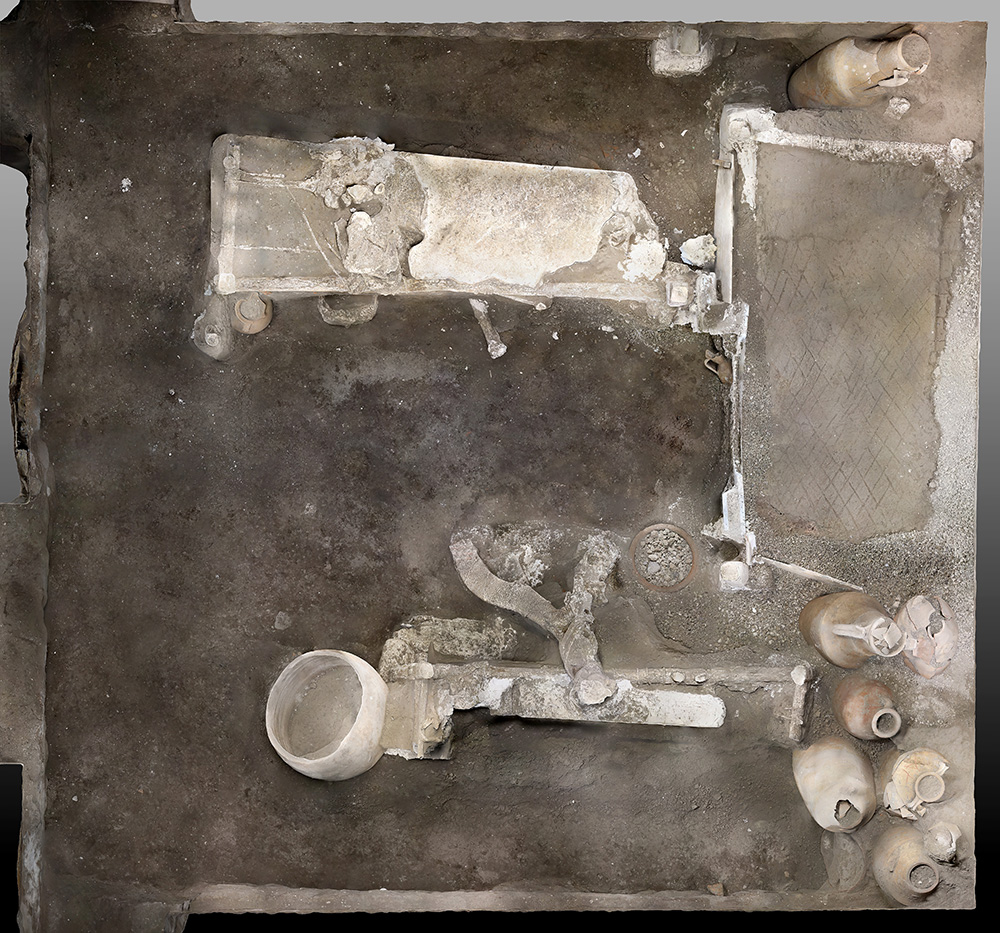Enslaved People’s Quarters Unearthed at Pompeii
It wasn’t only used as a place to sleep.
The city of Pompeii has been a wonder to the world and to science ever since it was first discovered. The customs and daily activities of the people who lived there were frozen in time at 79 CE as a rain of hot volcanic ash and rock flowed down on them after the eruption of Mount Vesuvius. Many were killed instantly in the first eruption and the ash made casts of their bodies that would harden into stone. The complex society and urban sprawl of Pompeii meant that archaeologists are still uncovering new rooms and underground features in the network of houses, stables, and boathouses that were woven together with streets and pathways. Now a new discovery has been found showing how enslaved people of the time lived, and the results are about as grim as you’d expect.

The bunks of the enslaved servants were found together in one room which was discovered at Civita Giuliana, a suburban villa just outside Pompeii. The villa housed a well-to-do family, but that status was not reflected in the rooms of the enslaved people they used as servants. The small quarters were found near where a horse and chariot had previously been discovered. Another recent discovery at the villa were the bodies of two men, one with the compressed vertebrae of a servant and one without. Both are believed to have survived the first eruption only to have died in a subsequent blast.
The room contains humble barracks for the people who looked after the chariot, possibly a family. In it researchers found three wooden beds and a wooden chest, as well as fragments of fabric and metal. Chariot pieces and harness elements were found on the beds, indicating that whoever slept there was responsible for maintaining these expensive vehicles and other horse equipment at any time of day or night.

Two of the beds found in the room were sized for adults, while one was smaller and could have been made for a child. A chamber pot was also found there, as well as several jugs and amphorae (ancient food storage containers). The new Director General of the Archaeological Park of Pompeii, Gabriel Zuchtriegel, called this room, “something between a dormitory and a storage room” that was “cramped” and “precarious”. Zuchtriegel also noted how important of a find this is considering that these “invisible” people “who seldom appear in historical sources” can now have something of their lives known millennia after they died.
According to the Archaeological Park of Pompeii there was only one window placed high up in the quarters and there was no evidence of any kind of wall decorations in the room. By contrast the wall and floors of the main parts of the local villas were extravagantly decorated with frescoes and mosaics and even a food stall uncovered in Pompeii was lavishly painted.

An overhead view of barracks and the nearby rooms shows how closely the enslaved people lived to their work. A chariot is visible just outside the small quarters and at the other end a horse is seen, having also perished in the volcano eruption while positioned under a portico.
Plaster casts are being made from the beds and the objects in the room so that a durable exhibit of the quarters can be made and studied. No humans remains have been reported in the room.
You can see more of the enslaved servants’ room in the video below.
SKM: below-content placeholderWhizzco for DOT

